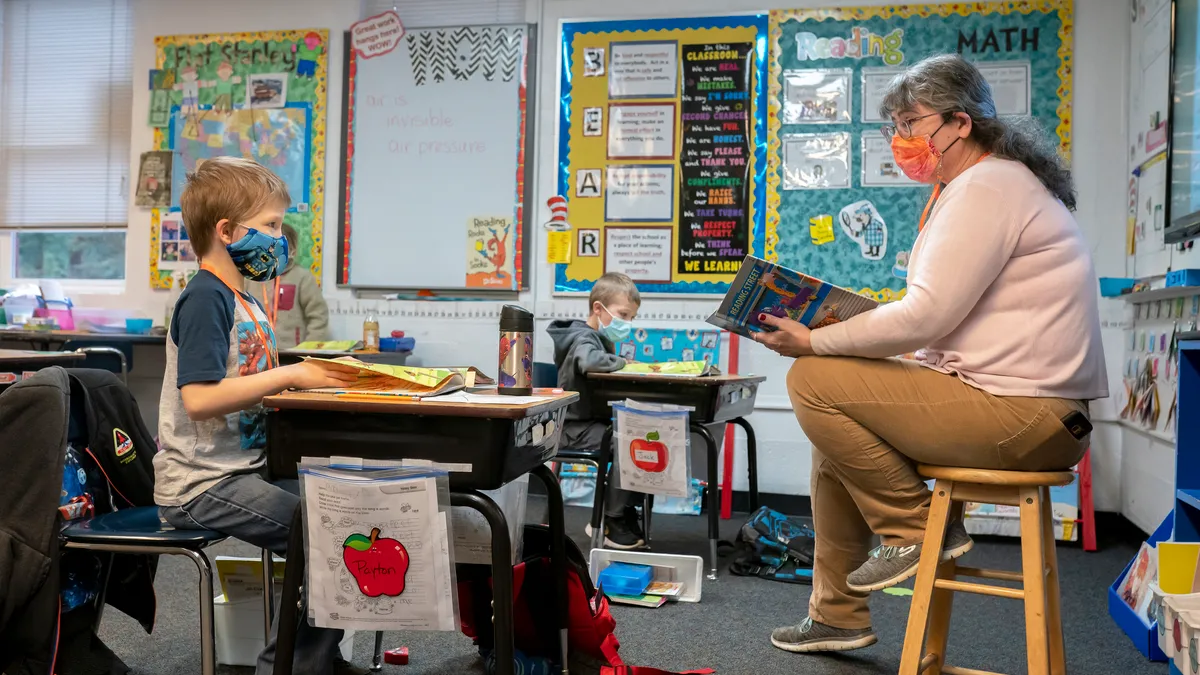Dive Brief:
- The San Bernardino City Unified School District in California has aligned its standards-based curriculum with additional lessons individualized for the specific special education goals of each student with disabilities, district representatives said during a Tuesday webinar hosted by the Council of Administrators of Special Education.
- The curriculum alignment with Let's Go Learn, a company that provides diagnostic testing and personalized learning, began last summer and was implemented through targeted professional development customized for teachers’ technology comfort levels.
- As special education programs nationally continue to respond to pandemic-related student learning loss, many are relying on formative assessment data to better pinpoint skills students still need support in and those they have mastered.
Dive Insight:
Like many districts, San Bernardino is eager to help students recover any learning loss experienced while schools were closed to in-person learning. Special education students in general were especially vulnerable to pandemic-learning hardships because they may have missed out on individualized therapies and interventions during school closures.
A national survey conducted by the Council of Parent Attorneys and Advocates, released Tuesday, found 86% of parents of students with disabilities reported their child had learning loss, regression or slower-than-expected progress because of school disruptions caused by COVID-19.
The same survey, which had 254 responses, found fewer than 1 in 5 students with disabilities had received any offer for compensatory services to make up for missed special education services during the pandemic.
Last school year, San Bernardino tried to proactively address potential learning loss for students awaiting special education evaluations by offering them Let's Go Learn individualized lessons in addition to their regularly assigned school work, district Director of Special Education Howana Lundy said during the webinar.
This school year, the 53,000-student, large urban district is relying on the curriculum alignment and data monitoring, including a newly developed special education data dashboard, to quickly identify and respond to gaps in learning and skill development for K-12 students with disabilities. Teachers are also meeting regularly to share best-practice strategies.
It's the ability to take deep dives into student assessment data and help teachers interpret that data for actionable interventions that has been especially helpful, said Barby Rolland, the district's assistant director of instructional programs for special education.
"We can collect all the numbers that we want, but unless we do something with it, then it's meaningless, right?" Rolland said.
The data has also been helpful in conversations with parents about their children's progress. Teachers were able to share graphs of that growth during recent parent-teacher conferences, the district administrators said.
Lundy also said district special education leaders communicated their efforts on the differentiated instruction and data analysis with other departments so those administrators are knowledgeable about the interventions. About 80% of the district's students who are eligible for special education services participate in general education classes, she said.
"If we don't get really good at that first instruction, and if we don't teach them how to access the core curriculum, we're not going to be setting them up for graduation," Lundy said.












